Lutheran liturgy, rooted in the Reformation, emphasizes the Divine Word and Sacraments as means of grace. It blends historical traditions with accessible worship, enriching congregational spiritual life.
1.1 Historical Background of Lutheran Worship
Lutheran worship traces its roots to the Reformation, led by Martin Luther in the 16th century. Luther sought to reform Catholic liturgical practices, preserving traditional elements while emphasizing the Word of God and sacraments. The Formula Missae (1523) and Deutsche Messe (1526) laid the groundwork for Lutheran liturgy, blending Latin and vernacular languages. Over centuries, the liturgy evolved, influenced by hymns and sacramental practices, yet retained its theological core. This historical foundation ensures Lutheran worship remains both rooted in tradition and accessible to modern congregations, reflecting a balance of continuity and renewal.
1.2 Core Principles of Lutheran Liturgical Practice
Lutheran liturgical practice is rooted in the Reformation, emphasizing the centrality of the Word of God and the Sacraments as means of grace. The liturgy is Christ-centered, focusing on the Gospel and the real presence of Christ in the Eucharist. It underscores the priesthood of all believers, encouraging active congregational participation. The liturgy also balances tradition with accessibility, ensuring worship is both reverent and understandable. These principles guide the structure and spirituality of Lutheran worship, fostering a communal and grace-filled encounter with God.
1.3 The Role of Liturgy in Lutheran Spirituality
Liturgy is central to Lutheran spirituality, serving as a means of grace that deepens faith and nourishes the soul. Through the Divine Service, believers encounter God’s Word and Sacraments, which are seen as tangible expressions of His love and forgiveness. The liturgy fosters a communal spiritual life, uniting the congregation in worship and strengthening their identity as the Body of Christ. It provides comfort, guidance, and a sense of continuity, rooted in tradition while remaining relevant to contemporary life. In this way, liturgy becomes a vital source of spiritual growth and renewal for Lutherans.
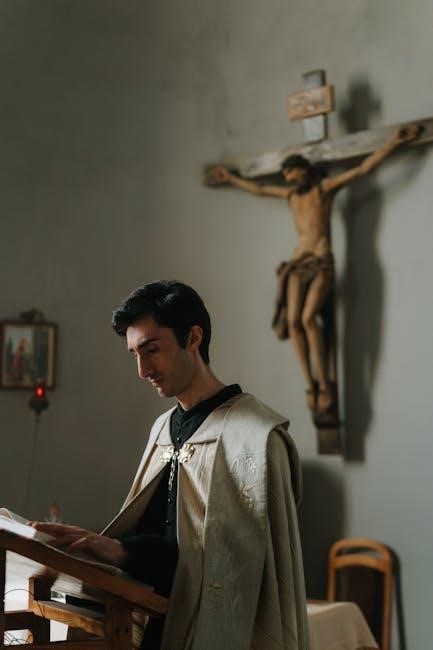
Structure of the Lutheran Divine Service
The Lutheran Divine Service is structured into two main parts: the Liturgy of the Word and the Liturgy of the Sacrament, ensuring a balanced and meaningful worship experience.
2.1 The Liturgy of the Word
The Liturgy of the Word begins with an invocation, followed by confession and absolution, emphasizing God’s grace. Scripture readings, including Old Testament, Epistle, and Gospel, are central. The sermon proclaims the Gospel, applying it to daily life. Congregational participation through creeds and hymns affirm faith. Prayers for the church and world are offered, seeking God’s mercy and blessings. This liturgical segment focuses on the proclamation of God’s Word, preparing the congregation to receive the Sacrament, fostering spiritual growth and unity in worship.
2.2 The Liturgy of the Sacrament
The Liturgy of the Sacrament centers on the Eucharist, where believers receive Christ’s body and blood. It begins with the offertory, offering bread and wine. The consecration follows, recalling Christ’s institution of the Sacrament. Distribution involves the congregation partaking, emphasizing union with Christ and one another. The rite concludes with thanksgiving and a final blessing. This sacred meal strengthens faith, forgives sins, and deepens unity in Christ, reflecting Lutheran theology of the real presence and the means of grace.
2.3 Key Components of the Service
The Lutheran Divine Service includes several key components that shape its structure and meaning. The service typically begins with an invocation and confession, followed by the Kyrie and Gloria. The Liturgy of the Word features readings from Scripture, a sermon, and the Creed. The Liturgy of the Sacrament includes the offertory, consecration, and distribution of the Eucharist. Music plays a central role, with hymns, chorales, and liturgical chants. Prayers, such as the Lord’s Prayer, are also integral; These elements reflect the Lutheran emphasis on Word and Sacrament as means of grace, fostering communal worship and spiritual renewal.
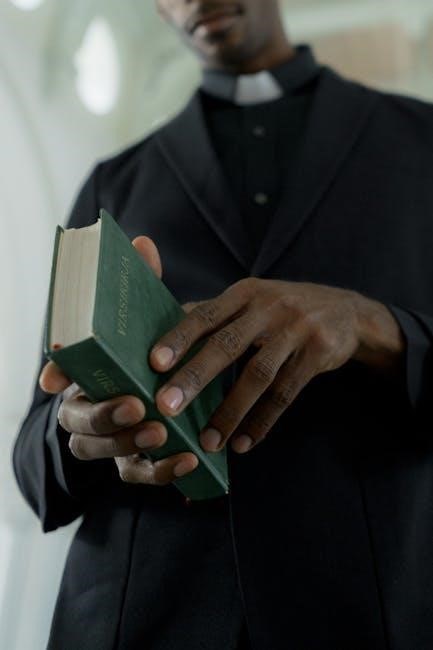
Theological Foundations of Lutheran Liturgy
Lutheran liturgy is rooted in the theology of grace, emphasizing the Word and Sacraments as means of spiritual nourishment. It reflects Reformation principles, blending tradition with theological depth.
3.1 The Sacraments in Lutheran Worship
In Lutheran worship, the Sacraments are central, viewed as tangible means of grace through which God imparts spiritual blessings. Baptism and the Eucharist are recognized as divinely instituted by Christ. Baptism is seen as a sacrament of rebirth, uniting believers with Christ, while the Eucharist involves the Real Presence of Christ in, with, and under the bread and wine, offering forgiveness and spiritual nourishment. These sacraments are integral to liturgical practice, reinforcing the theology of grace and faith, and are administered in accordance with Scripture and Lutheran confessional standards to strengthen the believer’s faith and communal worship life.
3.2 The Concept of “Means of Grace”
In Lutheran theology, “Means of Grace” refers to the ways God conveys His grace and forgiveness to humanity. These include the Divine Word—preaching, Scripture, and the Gospel—and the Sacraments of Baptism and the Eucharist. These means are not human efforts but divinely instituted channels through which God acts to justify and sanctify believers. The Word enlightens the mind and heart, while the Sacraments provide tangible expressions of God’s promise of salvation. Lutherans emphasize that grace is received through faith, trusting in Christ’s merits, rather than through human works or rituals.
3.3 The Role of the Divine Word in Liturgy
The Divine Word holds a central place in Lutheran liturgy, serving as the foundation for worship and spiritual nourishment. It encompasses the reading of Scripture, the proclamation of the Gospel, and the teachings of Christ. Through the Word, God speaks directly to His people, offering comfort, guidance, and salvation. The liturgy is structured to emphasize the Word’s transformative power, with hymns, prayers, and sermons all rooted in Scripture. This focus ensures that worship remains Christ-centered and faithful to the biblical message, fostering a deep connection between the congregation and God’s revelation. The Word is both informative and transformative, shaping believers’ faith and lives.

Liturgical Resources and Documents
Lutheran liturgical resources include hymnals, service books, and digital tools, providing structured worship materials and educational aids for congregations and leaders to enrich spiritual practices effectively.
4.1 The Lutheran Hymnal and Its Significance
The Lutheran Hymnal, a cornerstone of worship, contains traditional hymns, liturgical settings, and psalm tones. It preserves Lutheran heritage, fostering unity and continuity in worship practices across generations. Many congregations still use it, valuing its rich musical and theological content. The hymnal serves as a spiritual companion, enriching devotional life and communal worship. Its significance lies in its ability to connect the faithful to centuries of liturgical tradition, ensuring the continuity of Lutheran musical and theological identity.
4.2 Contemporary Liturgical Texts and Hymnals
Contemporary Lutheran liturgical texts and hymnals, such as the Lutheran Service Book and Evangelical Lutheran Worship, blend tradition with modern expressions of faith. These resources incorporate diverse musical styles and inclusive language, reflecting cultural and theological evolution. They emphasize active congregational participation and accessibility, while maintaining liturgical integrity. Digital versions of these hymnals further enhance worship planning and engagement. By adapting to modern needs, these texts ensure the Lutheran liturgy remains relevant and vibrant, connecting worshippers across generations and contexts.
4.3 Digital Resources for Lutheran Liturgy
Digital resources have transformed access to Lutheran liturgical materials. Websites like the Lutheran Library offer free downloadable PDFs of hymns, liturgies, and educational tools. Apps and online platforms provide worshippers with convenient access to liturgical texts, enhancing personal and communal devotion. Digital repositories also preserve historical documents, such as the Lutheran Hymnal, ensuring their availability for future generations. These resources facilitate worship planning, education, and engagement, making Lutheran liturgy more accessible and adaptable in a modern, tech-driven world while maintaining its rich theological heritage and traditional practices.
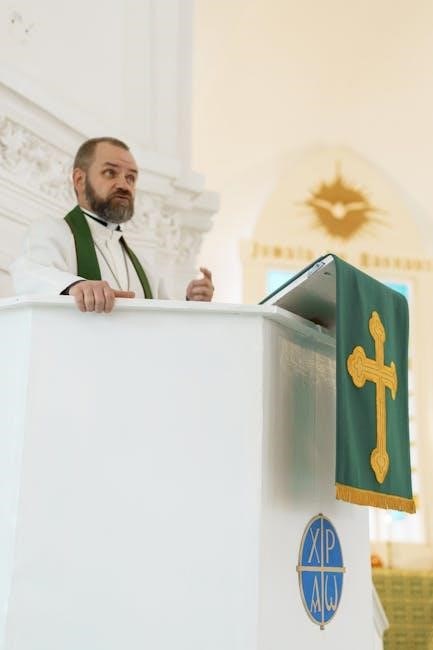
The Role of Music in Lutheran Worship
Music is central to Lutheran worship, enriching liturgy through hymns, chorales, and organ accompaniment, while modern adaptations incorporate diverse instruments and styles, preserving tradition and fostering spiritual connection.
5.1 Hymns and Chorales in Lutheran Tradition
Hymns and chorales are foundational to Lutheran worship, expressing theological truths and fostering congregational participation. Martin Luther, a pioneer in hymnody, emphasized vernacular singing to engage believers. Classic hymns like A Mighty Fortress Is Our God embody Reformation doctrine, while chorales provide a rich, communal musical expression. These musical elements integrate seamlessly with liturgical structure, enhancing the proclamation of the Word and sacramental life. The Lutheran Hymnal remains a cherished resource, preserving tradition while adapting to contemporary worship needs, ensuring hymns continue to inspire and educate the faithful across generations.
5.2 The Use of Organs and Other Instruments
The organ holds a central place in Lutheran liturgy, often symbolizing the “voice of the congregation.” Its rich, expansive sound supports hymns and chorales, enhancing worship. Pipe organs, in particular, are revered for their ability to lead and accompany congregational singing. Beyond the organ, other instruments like brass, strings, and woodwinds are increasingly used to complement worship, adding depth and variety. While the organ remains a traditional cornerstone, contemporary worship incorporates modern instruments to engage diverse congregations. This blend of musical elements enriches Lutheran liturgy, fostering a vibrant and inclusive worship experience that honors tradition while embracing innovation.
5.3 Modern Musical Adaptations in Liturgy
Modern Lutheran liturgy often incorporates contemporary musical styles, blending traditional hymns with praise band arrangements. Instruments like guitars, drums, and keyboards are increasingly used alongside organs to create vibrant worship experiences. Digital tools, such as loops and tracks, enhance musical accompaniment in smaller congregations. This adaptation reflects a desire to engage younger generations while preserving the theological richness of Lutheran worship. The use of modern instruments and styles complements traditional chorales, ensuring liturgy remains relevant and accessible in today’s diverse cultural landscape, fostering unity and participation across generations.
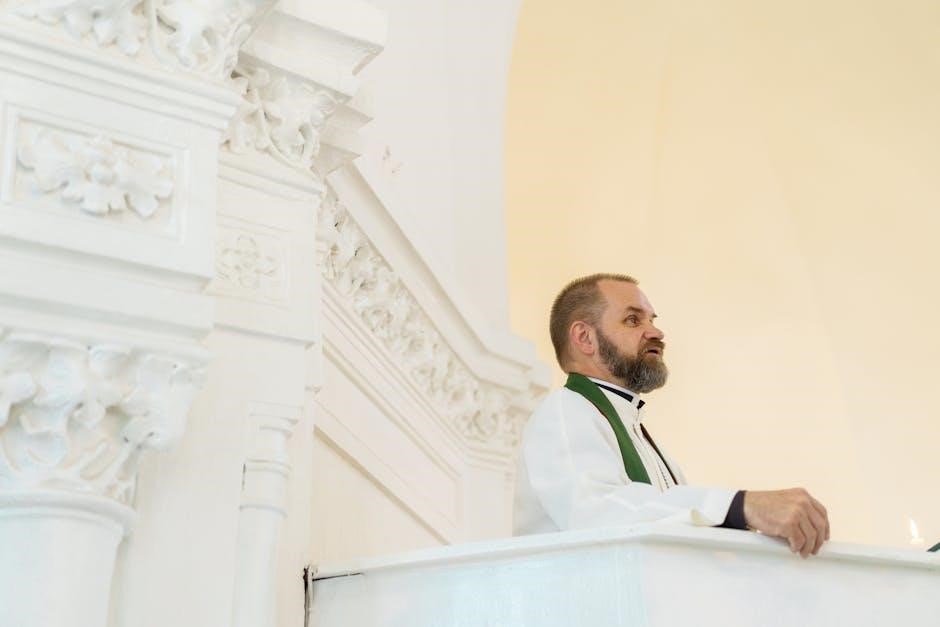
Liturgical Reforms and Contemporary Practices
Lutheran liturgical reforms balance tradition with modern practices, ensuring worship remains relevant while preserving theological integrity and congregational engagement in a changing world.
6.1 Historical Reforms in Lutheran Liturgy
Historical reforms in Lutheran liturgy began with Martin Luther’s efforts to retain elements of the Catholic Mass while simplifying and translating it into the vernacular. The Formula Missae and Deutsche Messe introduced congregational participation and emphasized the Word and Sacraments. These reforms aimed to make worship accessible and theologically sound, reflecting Lutheran principles. Over centuries, further adaptations ensured liturgical practices remained relevant, blending tradition with evolving cultural and theological insights while maintaining the core elements of Lutheran worship.
6.2 Modern Trends in Worship Practices
Modern Lutheran worship practices blend traditional liturgy with contemporary elements, such as praise bands and digital media, to engage diverse congregations. Many churches incorporate global music and cultural expressions, reflecting the church’s worldwide presence. Additionally, there is a growing emphasis on participatory worship, encouraging active involvement from the congregation. Digital resources, such as online hymnals and worship apps, are increasingly used to enhance accessibility. These trends aim to preserve the richness of Lutheran liturgy while making it relevant to today’s worshipers, ensuring a vibrant and inclusive spiritual experience that honors tradition and embraces innovation.
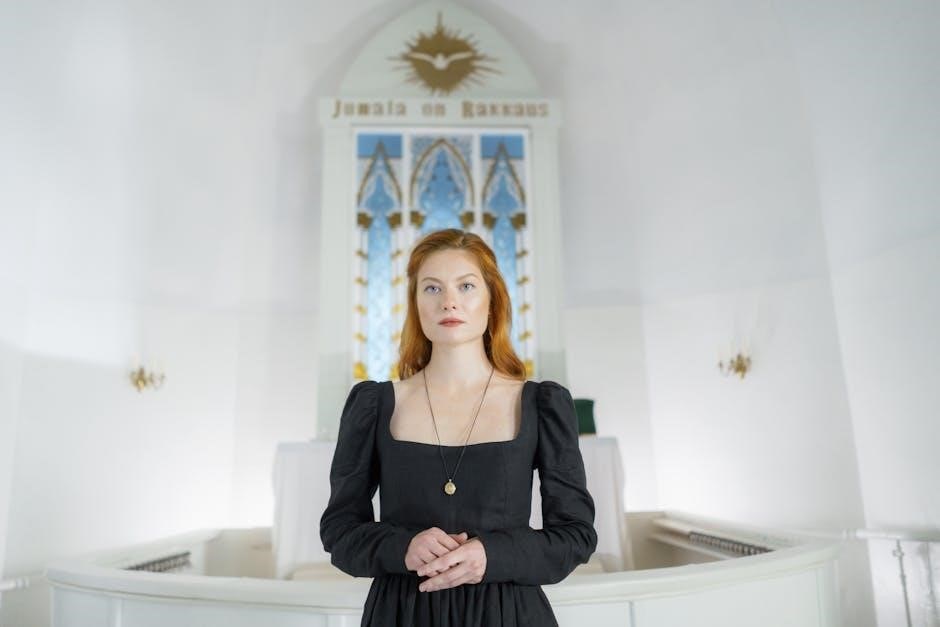
6.3 The Balance Between Tradition and Innovation
Lutheran liturgy thrives on balancing tradition and innovation, preserving its historical roots while adapting to contemporary needs. Traditional elements like the Divine Service structure, lectionaries, and sacramental practices remain central, ensuring continuity with the past. At the same time, modern innovations, such as new hymns, digital resources, and culturally diverse expressions, are integrated to engage today’s worshipers. This balance honors the liturgy’s enduring significance while making it accessible and relevant in a changing world. By blending the familiar with the new, Lutheran worship fosters a sense of unity and renewal, enriching both individual and communal spiritual experiences.
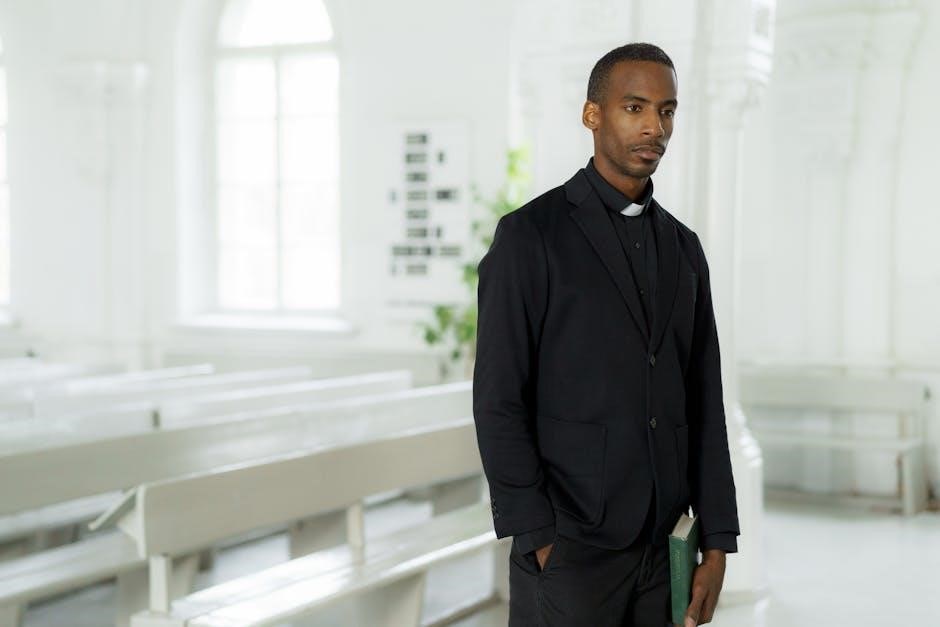
The Lutheran Liturgy in Global Context
Lutheran liturgy varies regionally, reflecting cultural influences while maintaining core theological unity. Global diversity enriches worship practices, yet shared traditions foster unity among Lutheran communities worldwide.
7.1 Regional Variations in Lutheran Worship
Lutheran worship practices exhibit regional variations, shaped by cultural and historical contexts. While maintaining theological consistency, liturgies adapt to local traditions, languages, and musical styles. In Africa, for instance, services often incorporate indigenous rhythms and instruments, blending traditional hymns with contemporary expressions. Similarly, Scandinavian Lutherans may emphasize choral music and festive ceremonies. These regional adaptations enrich worship while preserving the core liturgical framework. Such diversity highlights the global unity of Lutheranism, as congregations worldwide connect through shared beliefs and practices, even as they celebrate their unique cultural identities.
7.2 The Influence of Cultural Diversity on Liturgy
Cultural diversity profoundly shapes Lutheran liturgy, as global congregations adapt traditions to reflect local customs. In Asia, services may integrate traditional instruments and festivals, while Latin American communities infuse liturgy with vibrant music and dance. Language plays a key role, with translations of hymns and liturgical texts preserving theological integrity while resonating culturally; These adaptations ensure that worship remains relevant and meaningful across diverse contexts, fostering unity in faith while celebrating unique cultural expressions. Such inclusivity strengthens the global Lutheran identity, demonstrating the universal relevance of liturgical practices rooted in Scripture and tradition.
7.3 Global Unity in Liturgical Practices
Despite cultural variations, global Lutheran liturgical practices maintain unity through shared theological foundations. The Divine Service structure, centered on Word and Sacrament, remains consistent worldwide. Hymns, liturgical texts, and sacramental practices, though translated and adapted, preserve doctrinal integrity. This unity fosters a sense of belonging among Lutherans across continents, reinforcing shared faith and traditions. Regional adaptations, while reflecting local cultures, do not compromise the liturgy’s core elements, ensuring a harmonious balance between diversity and cohesion. This global unity in worship underscores the Lutheran emphasis on the universal Church and the timeless relevance of liturgical traditions.
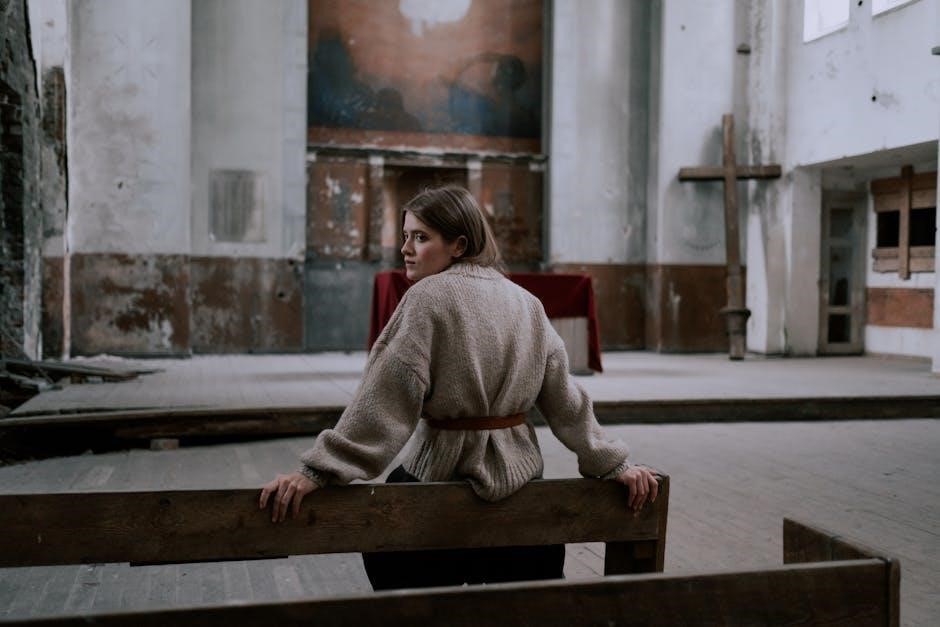
Practical Applications of Lutheran Liturgy
Lutheran liturgy is applied through congregational participation, education, and pastoral resources, fostering spiritual growth and unity in worship practices, guided by theological and historical foundations.
8.1 Congregational Participation in Worship
Congregational participation is vital in Lutheran liturgy, fostering active engagement through hymns, responsive readings, and communal prayers. Worshipers are encouraged to join in singing chorales and reciting creeds, emphasizing unity and shared faith. The liturgy invites believers to partake in the Sacrament, deepening their connection to Christ. Educational resources, such as hymnals and catechisms, equip congregants to understand and fully engage in worship practices. This collective involvement strengthens spiritual growth and fosters a sense of community, reflecting the Lutheran emphasis on worship as a corporate act of devotion and thanksgiving to God.
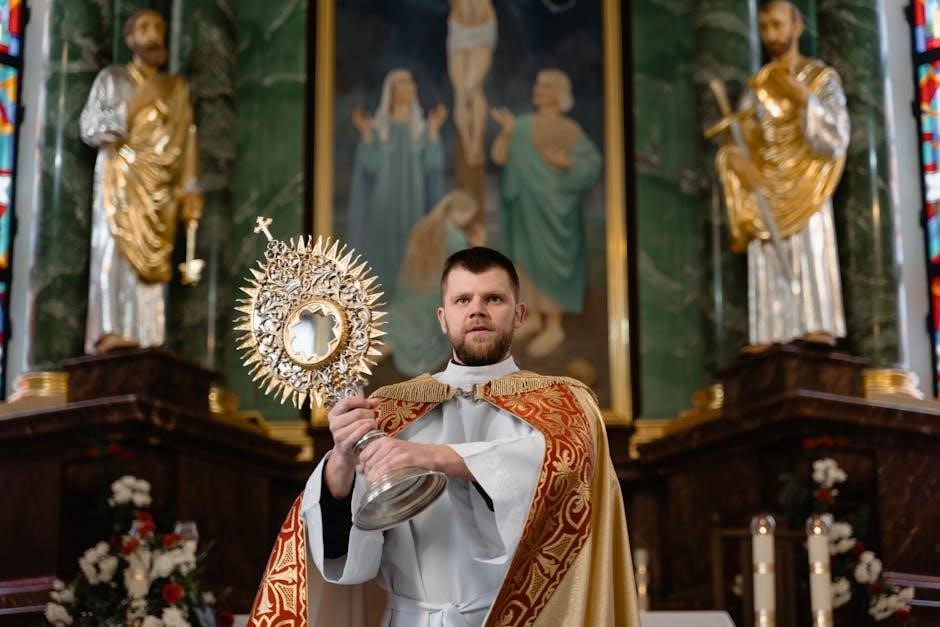
8.2 Liturgical Education for Laypeople
Liturgical education empowers laypeople to understand and engage deeply with Lutheran worship. Resources like hymnals and catechisms provide foundational knowledge, while workshops and study groups offer practical insights. By exploring the historical and theological roots of the liturgy, individuals gain a richer appreciation for its structure and significance. This education fosters active participation, enabling believers to fully embrace the rhythms and rituals of worship. Such efforts ensure that the liturgy remains a vibrant, meaningful practice, accessible to all members of the congregation and strengthening their spiritual lives through informed and heartfelt engagement in communal worship.
8.3 Pastoral Resources for Liturgical Leadership
Pastors play a crucial role in guiding Lutheran liturgical practices, and various resources support their leadership. The Lutheran Hymnal and contemporary hymnals provide musical and liturgical guidance, while catechisms offer theological foundations. Seminars, workshops, and online platforms equip pastors with practical skills for worship planning and congregational engagement. Liturgical calendars and lectionaries help structure services, ensuring consistency and adherence to tradition. These tools empower pastors to lead meaningful worship, fostering a deeper connection between the congregation and the liturgy. By leveraging these resources, pastors can effectively balance tradition with contemporary needs, enriching the spiritual experience for all.
The Lutheran liturgy’s enduring significance enriches spiritual life through tradition and grace. Its adaptability ensures relevance for future generations, maintaining a vibrant worship experience.
9.1 The Enduring Significance of Lutheran Liturgy
Lutheran liturgy remains vital, offering a bridge between tradition and contemporary worship. Its focus on the Word and Sacraments provides a consistent, grace-filled encounter with the divine. Rooted in Reformation principles, it continues to inspire spiritual growth and unity among believers. The liturgy’s ability to adapt while preserving its core elements ensures its relevance across generations. This enduring practice fosters a deep connection to the faith’s heritage, nurturing both individual and communal devotion. Its significance lies in its timeless message of grace, accessible to all who seek a meaningful worship experience.
9.2 The Future of Lutheran Worship Practices
The future of Lutheran worship lies in balancing tradition with innovation, embracing digital tools and diverse cultural expressions. As global influences grow, liturgical practices will adapt to incorporate contemporary music and hybrid worship models. Education and congregational engagement will remain central, fostering deeper understanding and participation. By preserving its theological core while exploring new ways to connect with modern audiences, Lutheran liturgy will continue to inspire spiritual growth. The integration of technology, such as digital hymnals and online resources, will enhance accessibility and ensure the liturgy’s relevance for future generations, maintaining its enduring significance in an ever-changing world.